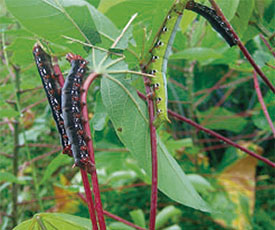Main problems caused by pests and diseases in the cultivation of cassava in the state of Barinas
Abstract
Cassava, Manihot esculenta Crantz, also known as cassava or cassava, is a perennial shrub, native to South America. It is mainly used as a fresh and processed root for human consumption, due to its high carbohydrate content; as raw material for the production of balanced animal feed, providing proteins and as an intermediate product in the non-food industry, with a high percentage of starch, contained in the dry matter.
The nutritional characteristics of the root, as well as the agroecological and climatic conditions required for its cultivation, make cassava a popular product among small and medium farmers.
In Venezuela, cassava is produced in almost all the states, Barinas being one of the main ones, commercially planted in the municipalities: Alberto Arvelo Torrealba, Rojas, Barinas, Cruz Paredes and Pedraza. Like most crops, it is affected by insects, pests and diseases that reduce its productivity and limit the quality of the final product (roots), if they are not managed properly.
The importance of this area has made agricultural research focus its attention on proposals that allow the design of practices adjusted to an integrated pest and disease management plan. For this reason, the National Institute of Agricultural Research in the state of Barinas operates the Plant Protection Laboratory, in order to provide the diagnostic service to producers. This article presents information on the most recurrent and limiting problems in cultivation, collected through representative samples of cassava producing areas in the state.
References
IICA – INIAP. Manual técnico de la yuca. Disponible en: http://www.ecuarural.gov.ec/ecuagro/paginas/productos/web_ulpi/manual_yuca/manual_%20 yuca.htm#yucaun [Consultado el 22 de enero de 2107]
Perozo, J., F. Fuenmayor y P. Morales. 2007. Manejo de insectos-plagas en el cultivo de la yuca. INIA Divulga 10:52-58.


